When photographing reflections, you’re looking to capture the reflection of specific elements or to capture the ambiance of the scene by including reflections of color.
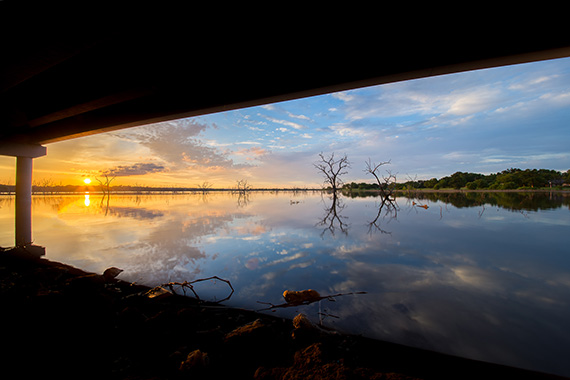
Reflections: What are you looking for?
Common elements to reflect in the scene are trees, animals, man-made structures, and clouds. Common elements to reflect color in the scene are clouds, sky, sunset and sunrise reds, oranges, and yellows.
Symmetrical reflections, or reflections where the subject and the reflection share half of the photograph each, are the easiest to master. Starting with systematical reflections allows you to focus on simpler compositions until you get the hang of them.
1. Use landscape elements and water to start
Mastering anything in photography requires practice. When trying to master a new skill set in photography, picking a subject that is easily available can speed up our learning. So, for reflections, this is landscape elements with water such as ponds and lakes. By focusing on elements within the landscape instead of complete scenes, you will train your eye to look for reflections in the water.
2. Look for single subjects
This seems counterintuitive because it may break several “go-to’s” in landscape photography, such as including foreground interest and clouds, but you are trying to master using reflections as a compositional element. Practice these photographs before or after noon so that the sun hits the subject at some angle. Look for trees, large birds, moss, weeds, or other single elements you can isolate for the refection.
In this stump photograph, I have only included the trunk and its reflection. The blue sky and texture of the trunk turn a mundane rotting piece of wood into a photograph with visual and aesthetic appeal.
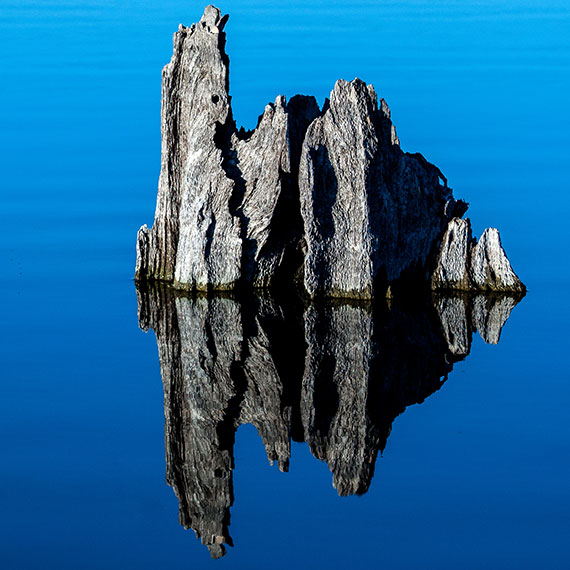
Tree Trunk Reflection
I generally look for three items when seeking a subject in water: gesture, contrast, or texture. With gesture, I mean uniqueness of the subject that makes it look different than other same subjects. For example, a tree may lean a particular way, when the rest of its species typically goes straight. A flower may appear to have fewer petals than is typical, or a log may look like stone instead of wood.
Always look for color contrast. For example, if photographing in blue water, a yellow plant has contrast worth considering as a subject. Contrast in the scene is a bit more difficult to explain, but you will know it when you see it. Typically, with two contrasting colors you will end up with having tones of the color due to the reflection.
Texture is a bit trickier than gesture and contrast, as it assumes enough proximity to capture the detail. If you shoot with telephoto lenses or are close to available subjects, then always look for texture that can provide aesthetic interest to the particular subject.
3. Add simple elements
Once you have mastered single elements with reflections, continue to keep very simple subjects, while adding simple elements. In this case, I’ve picked a subject with leaves and branches, instead of one of the flowers that was isolated to itself.
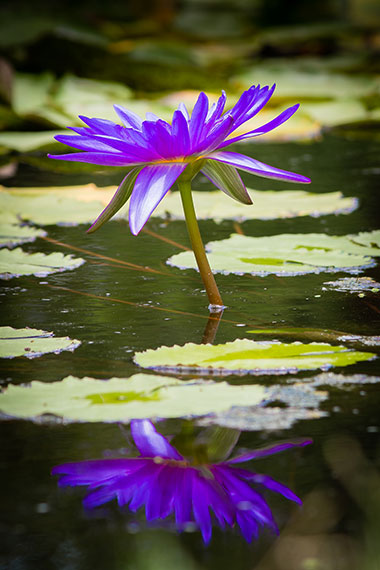
Water Lily
When considering elements to add around the subject, I look to augment the subject. Augmenting can be reinforcing the environment, for example, showing the lily pads with the flower. But augmenting can also become a compositional tool for you to make a better photograph. For example, you can move and use an element to be removing something unsightly in the photograph. You can also augment your subject by making a frame with the other elements in the photograph. However, don’t let the additional elements demand them to be used. For example, an element that is much brighter than the subject, can be distracting in the picture.
I always work a scene and include both isolated and non-isolated subjects by adding elements when available. But when starting out, it’s best to practice on isolated subjects then move to the adding elements, and then work the scene for you to decide later what you prefer.
4. Move to simple landscapes
Once you have photographed simple subjects in reflections, move on to simple landscapes. Again, keep the reflection start on the center of the photograph, which often times is the horizon.
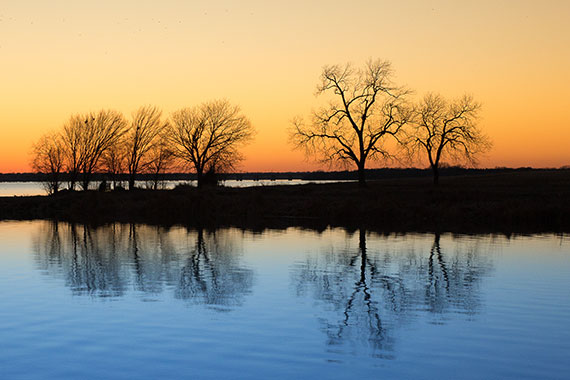
Simple Landscape
In this simple silhouette reflection, there is nothing but the trees and two color tones.
When looking for simple landscapes, try to keep the number of additional elements that make up the subject to one subject or a repeating subject. For example, a tree or a row of trees. A pier might make another simple subject in the landscape.
Also look for very limited color tonal ranges that either reflect the colors quite well or not at all. The previous photograph was an example of no color reflection. Here is an example of extreme color reflection:
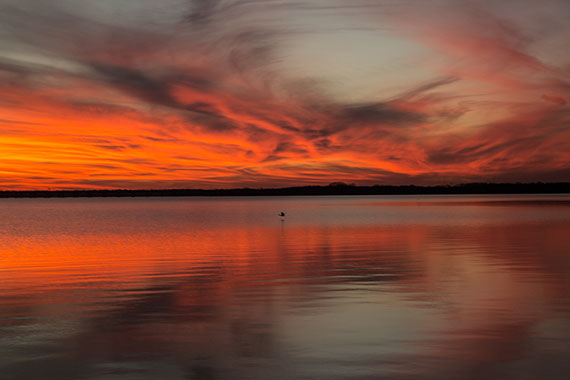
Clouds and Duck
With practice you will find yourself adding additional elements and more complex landscapes with reflections.
About the Author
Ron McCarty lives in Rowlett, Texas, and loves landscape photography. He founded the Rowlett, Texas Photography Club, one of the most active photography clubs in north Texas. Ron can be followed on Instagram or Facebook.
Go to full article: Introduction to Reflections in Landscape Photography: 4 Easy Steps
What are your thoughts on this article? Join the discussion on Facebook
PictureCorrect subscribers can also learn more today with our #1 bestseller: The Photography Tutorial eBook
The post Introduction to Reflections in Landscape Photography: 4 Easy Steps appeared first on PictureCorrect.